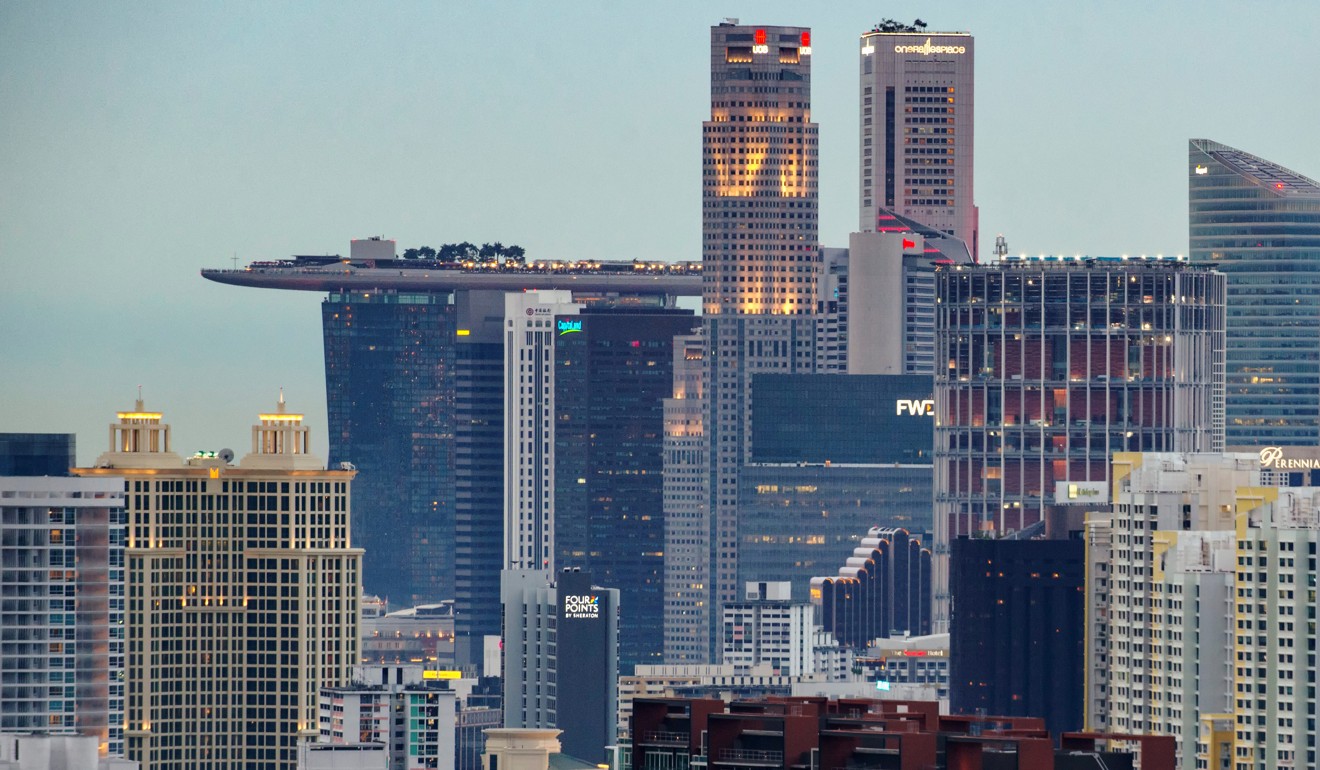
Singapore economy grew steadily at 0.7 per cent in 2019 heading into election year
- Growth in construction and services offset continued decline in manufacturing, which fell 2.1 per cent in the fourth quarter
- The flash estimate was within the government’s 0.5 per cent to 1 per cent range but the slowest growth over the course of a year for the decade
The flash estimate, while markedly lower than the 3.2 per cent growth Singapore registered in 2018, was within the government’s 0.5 per cent to 1 per cent range.
Fourth-quarter growth came in at 0.8 per cent compared to the same period a year ago, the Ministry of Trade and Industry (MTI) said. It was, overall, Singapore’s slowest growth over the course of a year for the decade.
Singapore unlikely to ease property curbs as election looms
Lee’s designated successor, Deputy Prime Minister Heng Swee Keat, will deliver the 2020 budget statement on February 18.
The latest figures showed the manufacturing sector fell 2.1 per cent in the fourth quarter, extending a 0.9 per cent decline in the July-September period.
On a quarter-to-quarter annualised basis, the drop appeared even more acute: the sector shrunk 7.3 per cent, reversing growth of 8.9 per cent in the third quarter.
“The contraction was due to output declines in the electronics, chemicals and transport engineering clusters, which more than offset output expansions in the precision engineering, biomedical manufacturing and general manufacturing clusters,” MTI said.
Jeff Ng, chief economist for Asia at Continuum Economic, said the figures showed Singapore’s manufacturing sector was still reeling from effects of global trade tensions.
Singapore avoids recession: what does it mean for Lee Hsien Loong’s election timetable?
“The US-China trade war is continuing, the global slowdown is also ongoing,” he said. “That will continue to weigh on the manufacturing sector.”
But Selena Ling, head of treasury research and strategy at OCBC Bank, noted that despite the further contraction in the manufacturing sector, its recovery continued even though it appeared “choppy”.
“People are worried that we are seeing a U-turn in terms of the manufacturing bottoming out story,” she said. “But if you look at the advanced GDP print … it suggests that the industry was not reversing into deeper waters of contraction.”

Following better-than-expected third-quarter results, analysts previously suggested the manufacturing industry had bottomed out and was expected to bounce back.
Economists also cheered optimistic results in the construction and services sectors, with the former growing 2.1 per cent year-on-year, supported by public sector construction activities. This expansion in the construction sector should propel growth numbers this year, said Song Seng Wun, an economist with CIMB Private Banking.
Singapore’s Building and Construction Authority earlier forecast the value of contracts awarded in 2019 to reach S$27-S$32 billion (US$20-US$24 billion)), with the potential to further surge to S$34 billion in 2020 and 2021.
The US-China trade war is continuing, the global slowdown is also ongoing
Ng also suggested the steady growth showed how Singapore’s services sector was resilient to external challenges.
“Singapore is becoming a more services-oriented economy as compared to a manufacturing-focused one,” he said, describing Thursday’s flash estimates as an “overall good news”.
Even though economists were unanimous in expecting the economy to improve further in 2020, Ng said the performance of other Asian economies remained a telling indicator. If mainland China or other Southeast Asian economies endure a further slowdown, Singapore would likely be affected, he said. According to Song, elections in the US and Taiwan could also create volatility.
As for Singapore’s election, Ling of OCBC suggested the Singapore government would introduce a supportive budget – one that is “more expansionary” than 2019’s.
Singapore’s fake news law: protecting the truth, or restricting free debate?
“The government has ample fiscal resources, and an election may be called anytime,” she said. “They have quite a fair bit of runway on the fiscal side to do it.”
Ng said he expected Singapore’s government to implement measures that would support businesses and households struggling to cope with the slowdown.
“We have had a few years of fiscal surpluses for this administration … and with an economic slowdown, it is an opportune time for the government to use the reserves,” he said.

